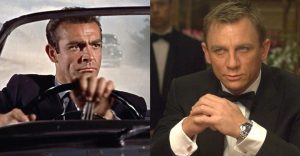Splinter Cell Remake Not Being Open World Is The Right Call

Tom Clancy’s Splinter Cell, Ubisoft’s iconic stealth shooter game, will be remade as a linear, mission-focused game and will not feature open-world gameplay. In a recent announcement on Ubisoft’s official website, three developers working on an untitled Splinter Cell remake gave crucial details from and insight into what a Splinter Cell remake will feature. Their approach to the upcoming game will focus on preserving the original Splinter Cell game experience, while updating the franchise for today’s modern audience. To Ubisoft, this means developing the game linearly, and the new Splinter Cell game will be all the better for it.
There are many benefits to Ubisoft remaking the Splinter Cell games. Ubisoft announced that the new Splinter Cell game will be developed using its new video game engine, Snowdrop. The original Splinter Cell games, which were released as early as 2002 and as recently as 2013, broke ground with their innovative level design and use of dynamic lighting. With a new game engine, mission levels can be designed in high-definition detail and unprecedented lighting scenarios that were not achievable in previous iterations of the game. This, when combined with a tightly-focused narrative gameplay, has the potential to make any new Splinter Cell game well worth trying for old and new fans of the series.
That tightly-focused narrative gameplay will be crucial to a new Splinter Cell‘s future success, and Ubisoft confirming that the new Splinter Cell will not be open world may be the best decision for that narrative. Part of the allure of the original Splinter Cell games was the novelty of players finding creative solutions and gadgetry to outwit well-placed NPCs and challenging level designs to achieve a mission goal undetected. Certain major elements of that stealth gameplay would be lost if the series attempted an open-world layout.
Ubisoft’s announcement post featured comments from Creative Director Chris Auty, Producer Matt West, and Technical Producer Peter Handrinos (via Ubisoft), who all had an opportunity to address the development team’s approach to its upcoming Splinter Cell revival. In their own words, each team member expressed their desires to preserve the original look and feel of Splinter Cell, while giving it a significant upgrade in design and gameplay. Ultimately, the decision to balk open-world gameplay in favor of the game’s original mission-based format is the right call.
The Original Splinter Cell Games Were Linearly Structured

Tom Clancy’s Splinter Cell was released in 2002. The first game in the series set the tone for its successors by introducing an approach to stealth gameplay unlike any other. Players couldn’t run-and-gun their way through levels, but were required to stay invisible and utilize gadgets, tactics, and shadows to surpass guards and security measures. Though there were potentially dozens of ways to conquer a level, each of them presented Sam Fisher with a mission goal which was to be achieved by staying as invisible as possible.
Since then, six other games have been released in the series, ending with Tom Clancy’s Splinter Cell: Blacklist in 2013. The series itself thrived in this model of gameplay, continually perfecting the Splinter Cell experience over the course of a decade. Ubisoft has tweaked the Splinter Cell formula over the years, such as the addition of multiplayer co-op and versus modes. But the core Splinter Cell experience has revolved around Sam Fisher’s mastery of stealth and gadgetry to complete episodic missions.
Open-World Gameplay Would Upend Splinter Cell’s Structure

Open-world gameplay would introduce too many radical changes to Splinter Cell‘s gameplay. Mobility and exploration are key to open-world environments. Though level exploration is also important to completing Splinter Cell missions, wide-area mobility has never been a major factor in the series. Players are given a mission, dropped into a beautifully designed mission area, and are tasked with staying in the darkness with precise movements and tactful moment-to-moment decisions. Instead of covering large areas of distance, Sam Fisher navigates narrow, crowded spaces, and might never leave a single building.
Open world gameplay also introduces a design challenge for Splinter Cell. Large, open environments sometimes sacrifice greater detail work for procedurally generated environment mapping. While Ubisoft proved its hand at massive open-world maps with Far Cry 6, bringing Sam Fisher into one would represent a break from the confined spaces of the original games. Instead, Ubisoft could focus on perfecting those smaller, more detailed levels, creating a truly immersive stealth experience in the highest possible detail.
Open World Gameplay Betrays The Character of Sam Fisher

An important factor in understanding Splinter Cell as a series is understanding Sam Fisher as a character. In the first game, Sam Fisher is a former U.S. Navy Seal who joins a special task force at the National Security Agency known as “Third Echelon.” As a Third Echelon operative, Fisher is tasked with covertly retrieving crucial information, evidence, and hostages, in order to prevent local and worldwide disasters. Throughout each installment, Sam Fisher has been fiercely loyal to his missions, operating at the highest level of discretion and secrecy for the U.S. government.
Open-world games typically present large-spanning environments, with main quest lines to follow and shorter character side quests to complete during player exploration. As a high-ranking stealth operative, Sam Fisher wouldn’t find himself taking up side-missions that may divert from his primary mission. Sam Fisher is a soldier first, and has historically been mission-oriented. Halo, another widely popular franchise featuring a resolute mission-focused protagonist, experimented with its own open-world game map in Halo Infinite. The game’s side-missions, however, only unlock fast-travel options and entertaining enemy conflicts, further confirming that an open-world environment would not benefit Splinter Cell as a gameplay mode.
As the protagonist of Splinter Cell, getting the character of Sam Fisher right is crucial to the game’s future success. With Ubisoft’s Splinter Cell announcement, it is clear that it will honor that in the future. It’s also possible (but my no means confirmed or even likely) that the original Splinter Cell voice actor may return to the role of Sam Fisher. If that proves to be true, it will be further confirmation that Ubisoft will focus all of its efforts on preserving, and improving, the original Splinter Cell experience.
About The Author

















